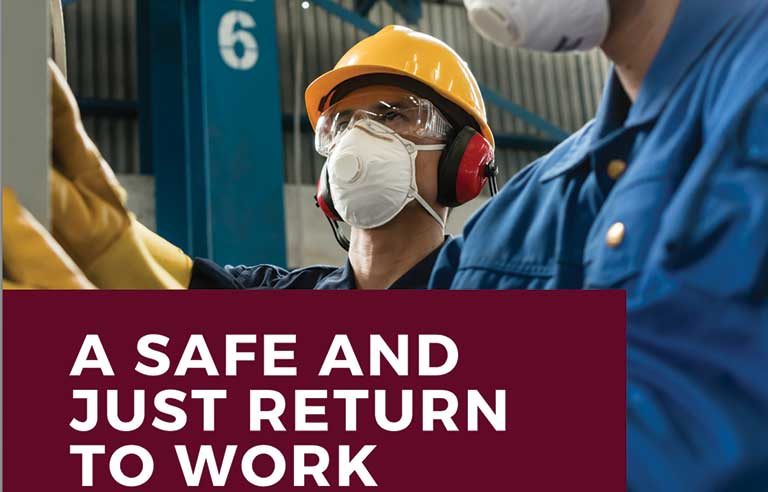Advocacy group releases guidelines for safe return to work

Los Angeles — To help ensure the safety of people returning to work – as well as those already on the job – during the COVID-pandemic, the National Council for Occupational Safety and Health has released guidelines for workplace safety; worker participation; and compensation for sick, injured and at-risk workers.
In a report released May 14, National COSH states that essential businesses should have critical safety measures in place that are enforced and monitored. Contributing to the report – A Safe and Just Return to Work – were physicians, certified industrial hygienists, attorneys, academics, and leaders of nonprofit and nongovernmental organizations.
“The United States is far from being ready to open for business without putting not only workers but entire communities at grave risk of illness and death,” the report states. “Only the most essential businesses should be open, and even those must only be allowed to operate if critical safety measures are in place.”
| Sign up for Safety+Health's free monthly email newsletters and get the news that's important to you. |
The guidelines emphasize that protections must follow NIOSH’s Hierarchy of Controls, which places personal protective equipment as the final line of defense.
According to National COSH, a safe return-to-work strategy requires, at a minimum:
- Effective and stringent health and safety protections informed by science; backed by robust enforcement; and designed with input from workers, employers and unions, among others.
- A planned, detailed and meaningful system for testing, screening, contact tracing, isolation and epidemiological surveillance.
- Guaranteed job protection and just compensation for workers, as well as individuals who can’t work.
- Respect and inclusion of meaningful worker and union involvement in decision-making, return-to-work plans and workplace safety.
- Measures to ensure equity, inclusion and a path to end health and economic disparities.
“Employers who adopt a ‘business-as-usual’ approach could cause workers and their family members to become sick or even die,” Sherry Baron, a professor of public health at Queens College in New York City and a contributor to the report, said in a press release. “The right way to reduce risk and limit harm is to include workers in making the plan and implementing effective safety programs, based on the best available scientific evidence.”
Post a comment to this article
Safety+Health welcomes comments that promote respectful dialogue. Please stay on topic. Comments that contain personal attacks, profanity or abusive language – or those aggressively promoting products or services – will be removed. We reserve the right to determine which comments violate our comment policy. (Anonymous comments are welcome; merely skip the “name” field in the comment box. An email address is required but will not be included with your comment.)

